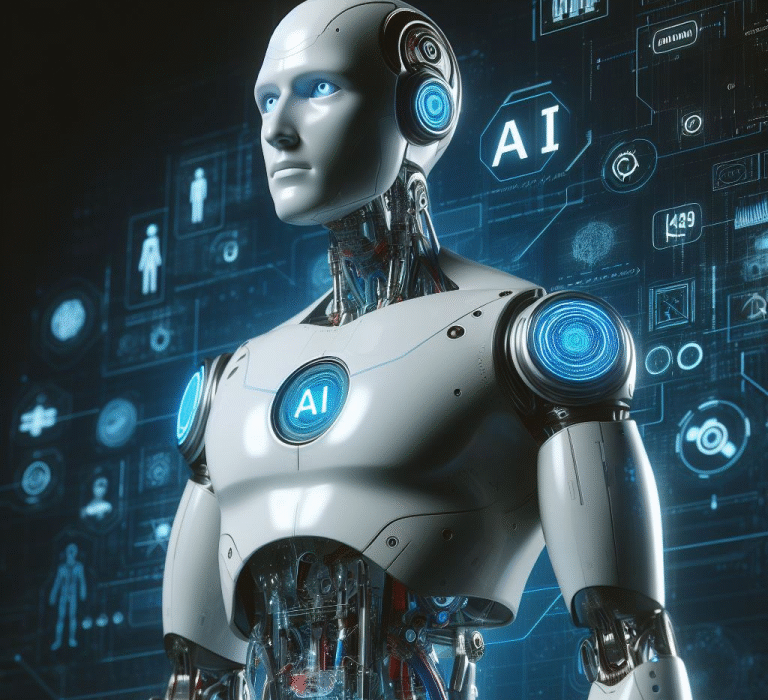In the early days of computing, machines were given instructions in exact, painstaking detail. If a programmer wanted the computer to play chess, every possible rule and move had to be explicitly coded. This rigid style of programming had its limits — the world is messy, unpredictable, and full of patterns that can’t be hardcoded into neat lines of logic.
Then came machine learning, a new way of teaching computers not through explicit instructions but through examples. By feeding algorithms with enough data, the computer could learn the rules on its own. The implications were staggering: self-driving cars that navigate traffic, medical systems that detect diseases from scans, recommendation engines that seem to read your mind.
But as machine learning grew in power, so did the complexity of getting it right. In practice, you couldn’t just “throw data at an algorithm” and expect magic. The real-world process of building a functional, reliable, and scalable machine learning system became a discipline of its own. That discipline is built around something called a machine learning pipeline.
A machine learning pipeline is not just a buzzword — it’s the framework that turns raw, messy data into actionable insights and intelligent predictions. Without it, most AI projects collapse under their own complexity.
Why We Need a Pipeline: The Chaos of Raw Data
Imagine walking into a massive warehouse filled with boxes of random stuff — clothes, furniture, electronics, even trash. Somewhere in this chaos lies a treasure chest, but it’s buried under piles of irrelevant junk. That’s what raw data looks like to a machine learning system.
Data comes in many forms: images, text, audio, numerical logs, sensor readings, and more. Most of it is inconsistent, incomplete, and riddled with noise. If you feed such chaotic data directly into a machine learning algorithm, it will learn nonsense patterns or fail entirely.
The machine learning pipeline exists to bring order to this chaos. It’s a structured sequence of steps that transforms raw data into clean, meaningful, and algorithm-ready inputs, trains models on them, evaluates performance, and deploys them into real-world environments.
The Heart of the Pipeline: A Continuous Journey
A key thing to understand is that a machine learning pipeline isn’t a one-off process. It’s not something you set up once and forget. Instead, it’s a continuous, evolving system — more like a river than a pipeline in the industrial sense. New data flows in, models need retraining, performance drifts over time, and the whole system must adapt to changing conditions.
The journey begins the moment data is collected, but it doesn’t end even after the model is in production. Monitoring, retraining, and improving are just as crucial as the initial training phase. Without ongoing care, even the most brilliant models decay into irrelevance.
Step One: Ingesting Data into the Pipeline
The first stage of a machine learning pipeline is data ingestion — the process of gathering and importing data into the system. This is where the raw, untamed data from various sources enters the picture.
Data can come from transactional databases, streaming sensors, user-generated content, web scraping, or third-party APIs. For example, a fraud detection system might pull transaction logs in real time from banking servers. A medical imaging AI might pull MRI scans from hospital databases.
At this stage, decisions about data format, storage, and accessibility are critical. Will the pipeline operate in batch mode, processing large chunks of data periodically, or in streaming mode, handling events as they happen? The choice depends on the application. Real-time speech recognition can’t wait for batch updates, while monthly sales forecasts can.
Step Two: Cleaning and Preparing the Data
Once the data is ingested, the pipeline must clean and prepare it. This is where the “garbage in, garbage out” principle comes into play. Messy data leads to messy models. Cleaning involves removing duplicates, handling missing values, standardizing units, and resolving inconsistencies.
For example, in a dataset of customer purchases, “USA,” “United States,” and “U.S.A.” might all appear — the pipeline needs to normalize them into a consistent format. Dates may be recorded in different time zones, measurements in different units. Even simple errors, like negative ages or impossible timestamps, must be caught and corrected.
This stage often involves feature engineering — transforming raw variables into meaningful features that better capture the underlying patterns. A timestamp might be converted into “day of the week” or “hour of the day.” An address might be transformed into latitude and longitude coordinates. Good feature engineering can make the difference between a mediocre model and a world-class one.
Step Three: Splitting Data for Training and Evaluation
Once the data is clean and features are ready, the pipeline must split it into different sets: typically a training set to teach the model, a validation set to fine-tune it, and a test set to measure its final performance.
Without proper splitting, a model can “cheat” by memorizing the training data rather than learning general patterns. This is called overfitting, and it’s one of the most common pitfalls in machine learning.
In time-dependent data, like stock prices or weather forecasts, this split must respect the chronological order — you can’t train on data from the future to predict the past. In other cases, random splitting works fine.
Step Four: Choosing and Training the Model
With data ready, the pipeline moves to the modeling stage — the most glamorous part, but not necessarily the most time-consuming. Here, data scientists choose an algorithm and train it on the prepared data.
The choice of algorithm depends on the problem: linear regression for simple relationships, decision trees or random forests for interpretable models, deep neural networks for complex, high-dimensional data like images or speech.
Training involves feeding the data into the algorithm, adjusting internal parameters to minimize errors. This can take seconds for simple models or weeks for massive deep learning architectures trained on huge datasets.
The pipeline ensures that training is repeatable and scalable. In large organizations, model training might happen on distributed systems with specialized hardware like GPUs or TPUs. Automation ensures that retraining with new data is straightforward and doesn’t require manual intervention.
Step Five: Evaluating and Validating the Model
A model that works well on training data might fail miserably on new, unseen data. That’s why the pipeline includes rigorous evaluation using the validation and test sets.
Metrics vary by task. In classification problems, accuracy, precision, recall, and F1-score matter. In regression, metrics like mean squared error or mean absolute error are common. Sometimes, domain-specific metrics are more important: in medical diagnostics, missing a rare disease might be far worse than raising a false alarm.
This stage is also where hyperparameter tuning happens — adjusting parameters that control the model’s learning process, such as the learning rate in neural networks or the depth of a decision tree. Automated methods like grid search or Bayesian optimization can explore large parameter spaces efficiently.
Step Six: Deploying the Model into Production
Once a model passes evaluation, it’s ready for deployment — the moment it leaves the lab and begins working in the real world. Deployment might mean integrating the model into a mobile app, embedding it in a web service, or connecting it to an automated decision-making system.
The pipeline must handle packaging the model, ensuring it runs efficiently on the target hardware, and setting up interfaces for other systems to interact with it. This might involve REST APIs, message queues, or direct embedding into software products.
Deployment is also where latency, scalability, and robustness become critical. A recommendation engine can’t take minutes to respond, and a self-driving car’s vision system must handle edge cases without crashing.
Step Seven: Monitoring and Maintenance
The machine learning pipeline doesn’t end with deployment. In fact, this is where one of its most important roles begins: continuous monitoring. Models are trained on historical data, but the real world changes. This phenomenon is called data drift or concept drift.
For example, a model trained to detect spam might see its accuracy drop over time as spammers invent new tricks. A stock market prediction model might fail when economic conditions shift. The pipeline must detect these changes, trigger retraining, and ensure that performance stays within acceptable limits.
Monitoring also covers operational metrics like system uptime, latency, and error rates. In critical applications — think healthcare or aviation — these checks can be a matter of life and death.
The Pipeline as a Bridge Between Science and Engineering
At its core, a machine learning pipeline is more than just a technical tool. It’s a bridge between data science — the creative, exploratory work of discovering patterns — and software engineering — the disciplined, structured practice of building reliable systems.
A successful pipeline embodies both worlds. It gives scientists the freedom to experiment with new models and features while providing engineers with the stability and scalability needed for production systems. Without this balance, machine learning projects either stay trapped in experimental notebooks or collapse when exposed to real-world complexity.
Challenges in Building a Machine Learning Pipeline
Creating a robust pipeline is not trivial. It requires expertise in data engineering, distributed systems, machine learning theory, and domain knowledge. Challenges include ensuring data quality at scale, automating retraining without introducing errors, managing version control for both data and models, and maintaining reproducibility.
Security is another concern. Pipelines often handle sensitive data — medical records, financial transactions, personal information — which must be protected at every stage. Ethical issues also arise: biases in the data can lead to unfair or harmful predictions, and without careful design, the pipeline might amplify these biases.
The Future of Machine Learning Pipelines
As machine learning becomes more widespread, pipelines are evolving. Automated Machine Learning (AutoML) tools are making it easier to build end-to-end systems without deep expertise in every component. MLOps — the adaptation of DevOps principles to machine learning — is bringing a culture of continuous integration, testing, and deployment to the AI world.
In the future, pipelines may become even more dynamic, adapting to changes in data and environment without human intervention. They might self-heal, automatically identify and fix biases, or optimize their own architectures in response to feedback.
The Human Element
For all the automation and sophistication of machine learning pipelines, they remain human creations. Behind every step — from data cleaning to deployment — are choices made by people. Which data to include, which features to engineer, which metrics to optimize: these are decisions shaped by values, priorities, and goals.
A well-designed pipeline doesn’t just produce accurate predictions; it reflects the thoughtfulness and responsibility of its creators. In this sense, the pipeline is not just a technical artifact, but a moral one.
Closing Thoughts
The machine learning pipeline is the hidden machinery behind many of the AI systems shaping our world. It transforms raw data into intelligent action, balancing creativity with engineering discipline, and providing the structure needed to turn possibility into reality.
Understanding the pipeline is understanding the real work of AI — the patient, iterative, and sometimes messy process that turns algorithms into agents of change.
From the moment data enters to the moment predictions flow out, the pipeline is a story of transformation. And like all great stories, it’s one that is constantly being rewritten as the world changes around it.






